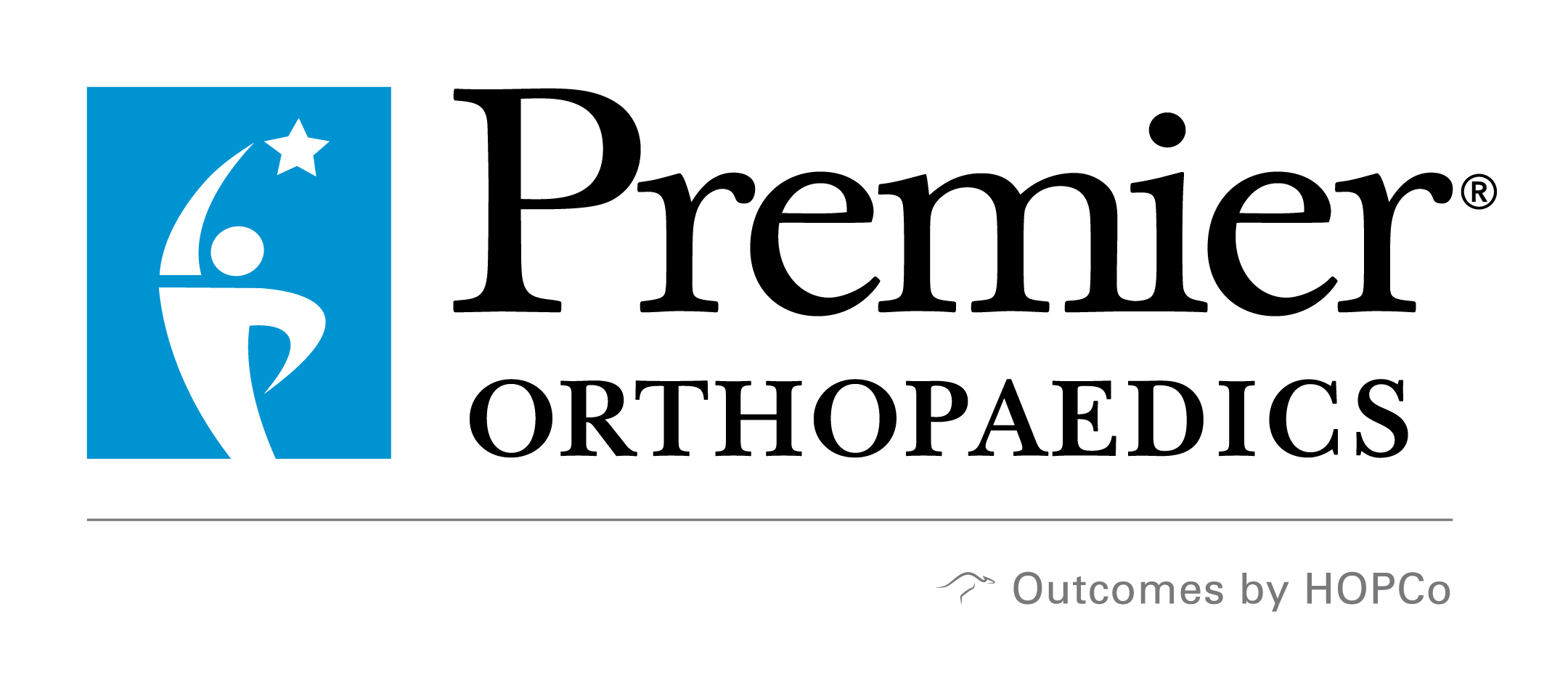Interventional Pain Management

LATEST BLOGS
Medical Acupuncture: Exploring an Ancient Alternative Treatment
ACUPUNCTURE: WHAT IS IT? Acupuncture is a method of encouraging the body to promote natural healing and to improve functioning. This procedure is done by inserting needles and applying heat or electrical stimulation at very precise acupuncture points. HOW DOES...
It’s the second most common sports injury, but a fall onto an outstretched hand (FOOSH) can happen at any age
A fall onto an outstretched hand is a common event in any age group—so common it has its own acronym, FOOSH. The cause of the fall can run the gamut: a sports injury, slip on ice, trip on an uneven surface, or simple loss of balance. Common among athletes—runners,...
How to Use Heat and Cold Therapy to Treat Pain
Healing after an injury can be a long and painful process. And while there are many restorative practices you can do to speed along the process including physical therapy, massage, and other natural healing modalities, there’s also something quite simple you can do...
Left untreated, pain takes a toll—physically, emotionally and psychologically. No one should endure this agony, not when specialists now have so many treatment methods at their disposal. Interventional pain physicians use leading edge technology to uncover the exact source of discomfort and then create a minimally invasive, personalized treatment plan to relieve it.
Hot Spots
According to the National Institutes of Health, pain affects more Americans than diabetes, heart disease and cancer combined, and it is the leading reason why Americans access the healthcare system. Typically, people who seek out interventional pain management are experiencing pain from acute or chronic overuse sports injuries and orthopaedic conditions affecting the spine, muscles and joints or sometimes after surgeries. Initial evaluations will involve finding the reason for pain and may include blood chemistry tests, X-rays and/or imaging such as musculoskeletal MRIs, ultrasound, and elecyromyography and nerve conduction studies EMG/NCS.
Comfort and Ease
Interventional Pain Management goes beyond simple medication in order to reduce and if possible, eliminate pain altogether. Often, this can involve a combination of techniques or approaches such as:
Epidural injections. This minimally invasive procedure can help relieve neck, arm, back and leg pain caused by inflamed spinal nerves, with relief lasting several days up to several years.
Fluoroscopically guided injections. With the help of an X-ray, these injections are a common way to treat pain and include cortisone (corticosteroid), hyaluronan and trigger point injections, which can be effective almost immediately.
Medical acupuncture. A classic Chinese method of encouraging the body to promote natural healing and to improve functioning by inserting needles and applying heat or electrical stimulation at very precise acupuncture points. Acupuncture stimulates the nervous system to release chemicals in the muscles, spinal cord, and brain. These chemicals will either change the experience of pain, or they will trigger the release of other chemicals and hormones which influence the body’s own internal regulating system. The improved energy and biochemical balance produced by acupuncture results in stimulating the body’s natural healing abilities, and in promoting physical and emotional well-being.
Osteopathic manipulation. A hands-on technique for treating pain through bodily stretching, pressure, traction and other forms of manipulation.
Peripheral nerve blocks. Containing both an analgesic and a steroid to control inflammation, nerve block injections can be inserted at the nerve root of the pain and quiet the sensation for temporary relief.
Radiofrequency ablations. Also called rhizotomy, this technique uses heat to destroy nerve fibers carrying pain signals to the brain and provides lasting relief for people with arthritis or other forms of chronic pain.
Spinal cord stimulation. This treatment solution typically works well for patients with chronic back, leg or arm pain. A device surgically placed under the skin sends a mild electric current to the spinal cord which modifies and masks pain signals, offering relief without the need for medication.
IF PAIN IS INTERFERING WITH THE ACTIVITIES OF DAILY LIVING, SEEK MEDICAL CARE RIGHT AWAY. CONTACT OUR INTERVENTIONAL PAIN SPECIALISTS AT PREMIER ORTHOPAEDICS.
1204 Baltimore Pike, Suite 100 Chadds Ford, PA 19317

PHYSICIANLOCATIONS[pac_dth_taxonomy_list post_type="physicians" taxonomy_physicians="loc-name" show_dynamic_taxonomies="on" show_taxonomy_image="off" show_taxonomy_button="off" taxonomies_column="1" disabled_on="on|on|off" admin_label="Locations"...

PHYSICIANLOCATIONS[pac_dth_taxonomy_list post_type="physicians" taxonomy_physicians="loc-name" show_dynamic_taxonomies="on" show_taxonomy_image="off" show_taxonomy_button="off" taxonomies_column="1" disabled_on="on|on|off" admin_label="Locations"...

PHYSICIANLOCATIONS[pac_dth_taxonomy_list post_type="physicians" taxonomy_physicians="loc-name" show_dynamic_taxonomies="on" show_taxonomy_image="off" show_taxonomy_button="off" taxonomies_column="1" disabled_on="on|on|off" admin_label="Locations"...
266 West Lancaster Avenue, Suite 200 Malvern, PA 19355
300 Springhouse Drive, Collegeville, PA 19426

PHYSICIANLOCATIONS[pac_dth_taxonomy_list post_type="physicians" show_dynamic_taxonomies="on" show_taxonomy_image="off" show_taxonomy_button="off" taxonomies_column="1" disabled_on="on|on|off" admin_label="Locations" module_class="phy-loc-side"...

PHYSICIANLOCATIONS[pac_dth_taxonomy_list post_type="physicians" show_dynamic_taxonomies="on" show_taxonomy_image="off" show_taxonomy_button="off" taxonomies_column="1" disabled_on="on|on|off" admin_label="Locations" module_class="phy-loc-side"...

PHYSICIANLOCATIONS[pac_dth_taxonomy_list post_type="physicians" show_dynamic_taxonomies="on" show_taxonomy_image="off" show_taxonomy_button="off" taxonomies_column="1" disabled_on="on|on|off" admin_label="Locations" module_class="phy-loc-side"...

PHYSICIANLOCATIONS[pac_dth_taxonomy_list post_type="physicians" show_dynamic_taxonomies="on" show_taxonomy_image="off" show_taxonomy_button="off" taxonomies_column="1" disabled_on="on|on|off" admin_label="Locations" module_class="phy-loc-side"...

PHYSICIANLOCATIONS[pac_dth_taxonomy_list post_type="physicians" show_dynamic_taxonomies="on" show_taxonomy_image="off" show_taxonomy_button="off" taxonomies_column="1" disabled_on="on|on|off" admin_label="Locations" module_class="phy-loc-side"...

PHYSICIANLOCATIONS[pac_dth_taxonomy_list post_type="physicians" show_dynamic_taxonomies="on" show_taxonomy_image="off" show_taxonomy_button="off" taxonomies_column="1" disabled_on="on|on|off" admin_label="Locations" module_class="phy-loc-side"...

PHYSICIANLOCATIONS[pac_dth_taxonomy_list post_type="physicians" show_dynamic_taxonomies="on" show_taxonomy_image="off" show_taxonomy_button="off" taxonomies_column="1" disabled_on="on|on|off" admin_label="Locations" module_class="phy-loc-side"...

PHYSICIANLOCATIONS[pac_dth_taxonomy_list post_type="physicians" show_dynamic_taxonomies="on" show_taxonomy_image="off" show_taxonomy_button="off" taxonomies_column="1" disabled_on="on|on|off" admin_label="Locations" module_class="phy-loc-side"...

PHYSICIANLOCATIONS[pac_dth_taxonomy_list post_type="physicians" show_dynamic_taxonomies="on" show_taxonomy_image="off" show_taxonomy_button="off" taxonomies_column="1" disabled_on="on|on|off" admin_label="Locations" module_class="phy-loc-side"...

PHYSICIANLOCATIONS[pac_dth_taxonomy_list post_type="physicians" show_dynamic_taxonomies="on" show_taxonomy_image="off" show_taxonomy_button="off" taxonomies_column="1" disabled_on="on|on|off" admin_label="Locations" module_class="phy-loc-side"...
400 McFarlan Road, Suite 100 Kennett Square, PA 19348

PHYSICIANLOCATIONS[pac_dth_taxonomy_list post_type="physicians" show_dynamic_taxonomies="on" show_taxonomy_image="off" show_taxonomy_button="off" taxonomies_column="1" disabled_on="on|on|off" admin_label="Locations" module_class="phy-loc-side"...

PHYSICIANLOCATIONS[pac_dth_taxonomy_list post_type="physicians" show_dynamic_taxonomies="on" show_taxonomy_image="off" show_taxonomy_button="off" taxonomies_column="1" disabled_on="on|on|off" admin_label="Locations" module_class="phy-loc-side"...

PHYSICAL THERAPISTLOCATIONS[pac_dth_taxonomy_list post_type="physicians" taxonomy_physicians="loc-name" show_dynamic_taxonomies="on" show_taxonomy_image="off" show_taxonomy_button="off" taxonomies_column="1" disabled_on="on|on|off" admin_label="Locations"...

PHYSICIANLOCATIONS[pac_dth_taxonomy_list post_type="physicians" taxonomy_physicians="loc-name" show_dynamic_taxonomies="on" show_taxonomy_image="off" show_taxonomy_button="off" taxonomies_column="1" disabled_on="on|on|off" admin_label="Locations"...

PHYSICIANLOCATIONS[pac_dth_taxonomy_list post_type="physicians" show_dynamic_taxonomies="on" show_taxonomy_image="off" show_taxonomy_button="off" taxonomies_column="1" disabled_on="on|on|off" admin_label="Locations" module_class="phy-loc-side"...

PHYSICIAN LOCATIONS [pac_dth_taxonomy_list post_type="physicians" show_dynamic_taxonomies="on" show_taxonomy_image="off" show_taxonomy_button="off" taxonomies_column="1" disabled_on="on|on|off" admin_label="Locations" module_class="phy-loc-side"...

PHYSICIANLOCATIONS[pac_dth_taxonomy_list post_type="physicians" taxonomy_physicians="loc-name" show_dynamic_taxonomies="on" show_taxonomy_image="off" show_taxonomy_button="off" taxonomies_column="1" disabled_on="on|on|off" admin_label="Locations"...

PHYSICIANLOCATIONS[pac_dth_taxonomy_list post_type="physicians" show_dynamic_taxonomies="on" show_taxonomy_image="off" show_taxonomy_button="off" taxonomies_column="1" disabled_on="on|on|off" admin_label="Locations" module_class="phy-loc-side"...

PHYSICIANLOCATIONS[pac_dth_taxonomy_list post_type="physicians" taxonomy_physicians="loc-name" show_dynamic_taxonomies="on" show_taxonomy_image="off" show_taxonomy_button="off" taxonomies_column="1" disabled_on="on|on|off" admin_label="Locations"...

PHYSICIANLOCATIONS[pac_dth_taxonomy_list post_type="physicians" taxonomy_physicians="loc-name" show_dynamic_taxonomies="on" show_taxonomy_image="off" show_taxonomy_button="off" taxonomies_column="1" disabled_on="on|on|off" admin_label="Locations"...
491 John Young Way, Suite 200 Exton, PA 19341

PHYSICIANLOCATIONS[pac_dth_taxonomy_list post_type="physicians" show_dynamic_taxonomies="on" show_taxonomy_image="off" show_taxonomy_button="off" taxonomies_column="1" disabled_on="on|on|off" admin_label="Locations" module_class="phy-loc-side"...

PHYSICIANLOCATIONS[pac_dth_taxonomy_list post_type="physicians" show_dynamic_taxonomies="on" show_taxonomy_image="off" show_taxonomy_button="off" taxonomies_column="1" disabled_on="on|on|off" admin_label="Locations" module_class="phy-loc-side"...

PHYSICIANLOCATIONS[pac_dth_taxonomy_list post_type="physicians" show_dynamic_taxonomies="on" show_taxonomy_image="off" show_taxonomy_button="off" taxonomies_column="1" disabled_on="on|on|off" admin_label="Locations" module_class="phy-loc-side"...

PHYSICIANLOCATIONS[pac_dth_taxonomy_list post_type="physicians" show_dynamic_taxonomies="on" show_taxonomy_image="off" show_taxonomy_button="off" taxonomies_column="1" disabled_on="on|on|off" admin_label="Locations" module_class="phy-loc-side"...

PHYSICIANLOCATIONS[pac_dth_taxonomy_list post_type="physicians" show_dynamic_taxonomies="on" show_taxonomy_image="off" show_taxonomy_button="off" taxonomies_column="1" disabled_on="on|on|off" admin_label="Locations" module_class="phy-loc-side"...

PHYSICIANLOCATIONS[pac_dth_taxonomy_list post_type="physicians" show_dynamic_taxonomies="on" show_taxonomy_image="off" show_taxonomy_button="off" taxonomies_column="1" disabled_on="on|on|off" admin_label="Locations" module_class="phy-loc-side"...

PHYSICIANLOCATIONS[pac_dth_taxonomy_list post_type="physicians" show_dynamic_taxonomies="on" show_taxonomy_image="off" show_taxonomy_button="off" taxonomies_column="1" disabled_on="on|on|off" admin_label="Locations" module_class="phy-loc-side"...

PHYSICIANLOCATIONS[pac_dth_taxonomy_list post_type="physicians" show_dynamic_taxonomies="on" show_taxonomy_image="off" show_taxonomy_button="off" taxonomies_column="1" disabled_on="on|on|off" admin_label="Locations" module_class="phy-loc-side"...

PHYSICIANLOCATIONS[pac_dth_taxonomy_list post_type="physicians" show_dynamic_taxonomies="on" show_taxonomy_image="off" show_taxonomy_button="off" taxonomies_column="1" disabled_on="on|on|off" admin_label="Locations" module_class="phy-loc-side"...
525 West Chester Pike, Havertown, PA 19083

PHYSICIANLOCATIONS[pac_dth_taxonomy_list post_type="physicians" show_dynamic_taxonomies="on" show_taxonomy_image="off" show_taxonomy_button="off" taxonomies_column="1" disabled_on="on|on|off" admin_label="Locations" module_class="phy-loc-side"...

PHYSICIANLOCATIONS[pac_dth_taxonomy_list post_type="physicians" taxonomy_physicians="loc-name" show_dynamic_taxonomies="on" show_taxonomy_image="off" show_taxonomy_button="off" taxonomies_column="1" disabled_on="on|on|off" admin_label="Locations"...

PHYSICIANLOCATIONS[pac_dth_taxonomy_list post_type="physicians" taxonomy_physicians="loc-name" show_dynamic_taxonomies="on" show_taxonomy_image="off" show_taxonomy_button="off" taxonomies_column="1" disabled_on="on|on|off" admin_label="Locations"...
656-676 E Swedesford Road, Wayne, PA 19087

PHYSICIANLOCATIONS[pac_dth_taxonomy_list post_type="physicians" taxonomy_physicians="loc-name" show_dynamic_taxonomies="on" show_taxonomy_image="off" show_taxonomy_button="off" taxonomies_column="1" disabled_on="on|on|off" admin_label="Locations"...
915 Old Fern Hill Road, Suite 1 B-A West Chester, PA 19380

PHYSICIANLOCATIONS[pac_dth_taxonomy_list post_type="physicians" show_dynamic_taxonomies="on" show_taxonomy_image="off" show_taxonomy_button="off" taxonomies_column="1" disabled_on="on|on|off" admin_label="Locations" module_class="phy-loc-side"...

PHYSICIANLOCATIONS[pac_dth_taxonomy_list post_type="physicians" show_dynamic_taxonomies="on" show_taxonomy_image="off" show_taxonomy_button="off" taxonomies_column="1" disabled_on="on|on|off" admin_label="Locations" module_class="phy-loc-side"...

PHYSICIANLOCATIONS[pac_dth_taxonomy_list post_type="physicians" taxonomy_physicians="loc-name" show_dynamic_taxonomies="on" show_taxonomy_image="off" show_taxonomy_button="off" taxonomies_column="1" disabled_on="on|on|off" admin_label="Locations"...

PHYSICIANLOCATIONS[pac_dth_taxonomy_list post_type="physicians" show_dynamic_taxonomies="on" show_taxonomy_image="off" show_taxonomy_button="off" taxonomies_column="1" disabled_on="on|on|off" admin_label="Locations" module_class="phy-loc-side"...

PHYSICIAN LOCATIONS [pac_dth_taxonomy_list post_type="physicians" show_dynamic_taxonomies="on" show_taxonomy_image="off" show_taxonomy_button="off" taxonomies_column="1" disabled_on="on|on|off" admin_label="Locations" module_class="phy-loc-side"...

PHYSICIANLOCATIONS[pac_dth_taxonomy_list post_type="physicians" taxonomy_physicians="loc-name" show_dynamic_taxonomies="on" show_taxonomy_image="off" show_taxonomy_button="off" taxonomies_column="1" disabled_on="on|on|off" admin_label="Locations"...

PHYSICIANLOCATIONS[pac_dth_taxonomy_list post_type="physicians" show_dynamic_taxonomies="on" show_taxonomy_image="off" show_taxonomy_button="off" taxonomies_column="1" disabled_on="on|on|off" admin_label="Locations" module_class="phy-loc-side"...

PHYSICIANLOCATIONS[pac_dth_taxonomy_list post_type="physicians" show_dynamic_taxonomies="on" show_taxonomy_image="off" show_taxonomy_button="off" taxonomies_column="1" disabled_on="on|on|off" admin_label="Locations" module_class="phy-loc-side"...

PHYSICIANLOCATIONS[pac_dth_taxonomy_list post_type="physicians" taxonomy_physicians="loc-name" show_dynamic_taxonomies="on" show_taxonomy_image="off" show_taxonomy_button="off" taxonomies_column="1" disabled_on="on|on|off" admin_label="Locations"...

PHYSICIANLOCATIONS[pac_dth_taxonomy_list post_type="physicians" taxonomy_physicians="loc-name" show_dynamic_taxonomies="on" show_taxonomy_image="off" show_taxonomy_button="off" taxonomies_column="1" disabled_on="on|on|off" admin_label="Locations"...
